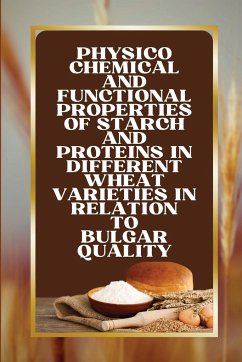The term 'wheat' describes a number of species and subspecies in the genus Tritician, however common, or bread wheat (Triticum aestivum) and durum wheat (Triticum durum) are the most important. Wheat is one of the most important cereal crops grown throughout the world, based on the annual volume of production. Wheat has the distinction of being the most important cereal in world trade, and the grain for which the quality specifications are the most critical. Common wheat accounts for about 95% of the world wheat production, while durum is responsible for the remaining 5% only. Nearly two third of total wheat production is used for human consumption and rest is utilized for cattle feed and non-food applications. In India, Wheat is the second largest cereal crop grown after rice. India's annual wheat production has been around 72 million tonnes over last few years. Punjab contributes about 59% share to the central food grain pool. Wheat is considered unique among cereals for its consumption in the form of various types of baked goods in different countries of the world (Khatkar & Schofield, 1997). The quality and diversity of products manufactured from wheat are remarkable.








